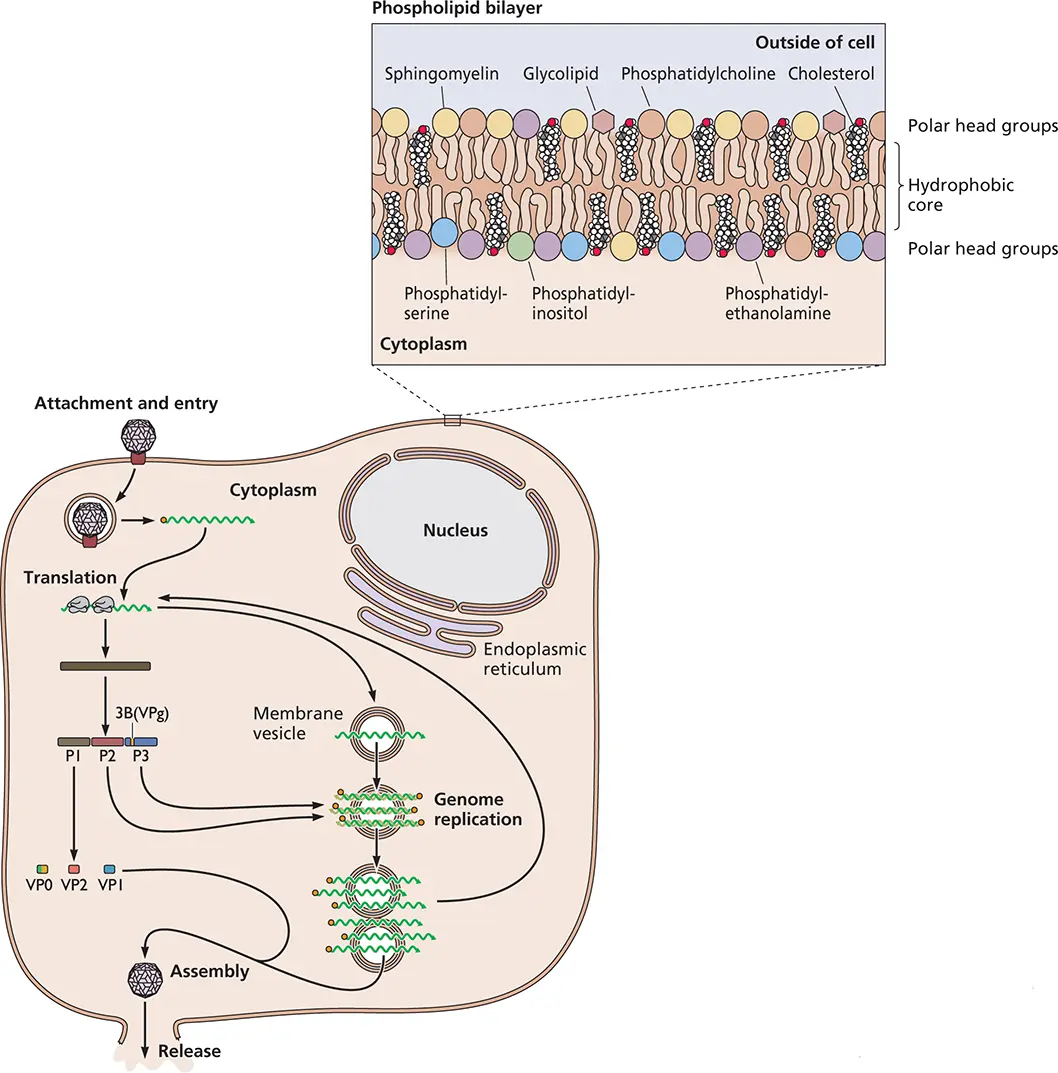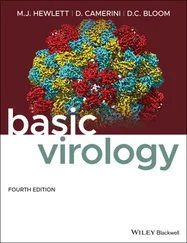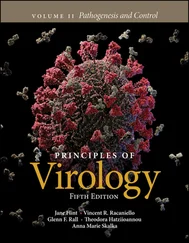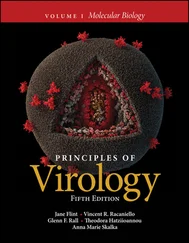Jane Flint - Principles of Virology
Здесь есть возможность читать онлайн «Jane Flint - Principles of Virology» — ознакомительный отрывок электронной книги совершенно бесплатно, а после прочтения отрывка купить полную версию. В некоторых случаях можно слушать аудио, скачать через торрент в формате fb2 и присутствует краткое содержание. Жанр: unrecognised, на английском языке. Описание произведения, (предисловие) а так же отзывы посетителей доступны на портале библиотеки ЛибКат.
- Название:Principles of Virology
- Автор:
- Жанр:
- Год:неизвестен
- ISBN:нет данных
- Рейтинг книги:3 / 5. Голосов: 1
-
Избранное:Добавить в избранное
- Отзывы:
-
Ваша оценка:
- 60
- 1
- 2
- 3
- 4
- 5
Principles of Virology: краткое содержание, описание и аннотация
Предлагаем к чтению аннотацию, описание, краткое содержание или предисловие (зависит от того, что написал сам автор книги «Principles of Virology»). Если вы не нашли необходимую информацию о книге — напишите в комментариях, мы постараемся отыскать её.
Volume I: Molecular Biology
Volume II: Pathogenesis and Control
Principles of Virology, Fifth Edition
Principles of Virology — читать онлайн ознакомительный отрывок
Ниже представлен текст книги, разбитый по страницам. Система сохранения места последней прочитанной страницы, позволяет с удобством читать онлайн бесплатно книгу «Principles of Virology», без необходимости каждый раз заново искать на чём Вы остановились. Поставьте закладку, и сможете в любой момент перейти на страницу, на которой закончили чтение.
Интервал:
Закладка:
Some events are common to virus replication in animals and in cells in culture, but there are also many important differences. While virus particles readily attach to cells in culture, in nature they must encounter a host, no mean feat for nanoparticles without any means of locomotion. After encountering a host, the virus particle must pass through physical host defenses, such as dead skin, mucous layers, and the extracellular matrix. Such barriers and other host defenses, such as antibodies and immune cells, which exist to combat virus infections, are not found in cell cultures. Virus infection of cells in culture has been a valuable tool for understanding viral infectious cycles, but the dissimilarities with infection of a living animal must always be considered.
The Cell
Viral reproduction requires many different functions of the host cell. Examples include the machinery for translation of viral mRNAs, sources of energy, and enzymes for genome replication. The cellular transport apparatus brings viral genomes to the correct cellular compartment and ensures that viral subunits reach locations where they may be assembled into virus particles. Subsequent chapters include a discussion of cellular functions that are important for individual steps in the viral infectious cycle.
PRINCIPLES The infectious cycle
Many distinct functions of the host cell are required to complete a viral infectious cycle.
The synthesis of new virus particles (i.e., a productive infection) requires target cells that are both susceptible (i.e., allow virus entry) and permissive (i.e., support virus reproduction).
Viral nucleic acids must be shielded from harsh environmental conditions in extracellular particles but be readily accessible for replication once inside the cell.
Viruses may be studied by propagation in cells within a laboratory animal or in cells in culture.
The plaque assay is the major way to determine the concentration of infectious virus particles in a sample.
Methods for quantifying and characterizing virus particles evolve rapidly, based on developments in detection, ease, cost, safety, utility in the field, and amenability to large-scale implementation.
Relationships among viruses can be deduced from phylogenetic trees generated from protein or nucleic acid sequences.
Viral reproduction is distinct from cellular or bacterial replication: rather than doubling with each cycle, each single cell cycle of viral reproduction is typically characterized by the release of many (often thousands) of progeny virions.
The multiplicity of infection (MOI) is the number of infectious units added per cell; the probability that any one target cell will become infected based on the MOI can be calculated from the Poisson distribution.
Global analysis of viral, cell, and host responses to virus infection can implicate particular cellular pathways in viral reproduction and can reveal signatures of virus-induced lethality or immune protection.

Figure 2.1 The viral infectious cycle. The infectious cycle of poliovirus is shown as an example, illustrating the steps common to most viruses: attachment and entry, translation, genome replication, particle assembly, and release. See Appendix, Fig. 22, for explanation of abbreviations. Inset: Lipid components of the plasma membrane. The membrane consists of two layers (leaflets) of phospholipid and glycolipid molecules. Their fatty acid tails converge to form the hydrophobic interior of the bilayer; the polar hydrophilic head groups (shown as balls) line both surfaces.
Entering Cells
Viral infection is initiated by a collision between the virus particle and the cell, a process that is governed by chance. A virion may not infect every cell it encounters: it must first come in contact with the tissues that contain cells to which it can bind. Such cells are normally recognized by means of the specific interaction of a virus particle with a cell surface receptor. These cellular molecules do not exist for the benefit of viruses: they all perform functions for the cell. Virus-receptor interactions can be either promiscuous or highly selective, depending on the virus and the distribution of the cell receptor. The presence of such receptors determines whether the cell will be susceptibleto the virus. However, whether a cell is permissivefor the reproduction of a particular virus depends on other, intracellular components found only in certain cell types. Cells must be both susceptible andpermissive if an infection is to be successful. Virus entry into cells is the topic of Chapter 5.
Viral RNA Synthesis
Although the genomes of viruses come in a number of configurations, they share a common requirement: they must be efficiently copied into mRNAs for the synthesis of viral proteins and progeny genomes for assembly. The synthesis of RNA molecules in cells infected with RNA viruses is a unique process that has no counterpart in the cell (see Chapter 6). With the exception of retroviruses, all RNA viruses encode an RNA-dependent RNA polymerase to catalyze the synthesis of both mRNAs and genomes. For the majority of DNA viruses and retroviruses, synthesis of viral mRNA is accomplished by RNA polymerase II, the enzyme that produces cellular mRNA (see Chapter 7). Much of our current understanding of the mechanisms of cellular transcription comes from study of the transcription of viral templates.
Viral Protein Synthesis
All viruses are parasites of translation: their mRNAs mustbe translated by the host’s cytoplasmic protein-synthesizing machinery (see Chapter 11). However, viral infection often results in modification of the host’s translational apparatus so that viral mRNAs are translated selectively. The study of such modifications has revealed a great deal about mechanisms of protein synthesis. Analysis of viral translation has also led to the discovery of new mechanisms, such as internal ribosome binding and leaky scanning, that have been subsequently found to occur in uninfected cells.
Viral Genome Replication
Replication of viral genomes requires the cell’s synthetic machinery in addition to viral proteins (see Chapters 6, 7, and 9). The cell provides nucleotide substrates, energy, enzymes, and other proteins. Transport systems are required because the cell is compartmentalized: essential components might be found only in the nucleus, the cytoplasm, or within subcellular organelles. Study of the mechanisms of viral genome replication has established fundamental principles of cell biology and nucleic acid synthesis.
Assembly of Progeny Virus Particles
The various components of a virus particle, the nucleic acid genome, capsid protein(s), and in some cases envelope proteins, are often synthesized in different cellular compartments. Their trafficking through and among the cell’s compartments and organelles requires that they be equipped with the proper homing signals (see Chapter 12). Components of virus particles must be assembled at some central location, and the information for assembly must be preprogrammed in these molecules (see Chapter 13). The primary sequences of viral structural proteins contain sufficient information to specify assembly; this property is exemplified by the remarkable in vitro assembly of tobacco mosaic virus from coat protein and RNA ( Box 2.1). Successful virus reproduction depends on redirection of the host cell’s metabolic and biosynthetic capabilities, signal transduction pathways, and trafficking systems (see Chapter 14).
Читать дальшеИнтервал:
Закладка:
Похожие книги на «Principles of Virology»
Представляем Вашему вниманию похожие книги на «Principles of Virology» списком для выбора. Мы отобрали схожую по названию и смыслу литературу в надежде предоставить читателям больше вариантов отыскать новые, интересные, ещё непрочитанные произведения.
Обсуждение, отзывы о книге «Principles of Virology» и просто собственные мнения читателей. Оставьте ваши комментарии, напишите, что Вы думаете о произведении, его смысле или главных героях. Укажите что конкретно понравилось, а что нет, и почему Вы так считаете.











